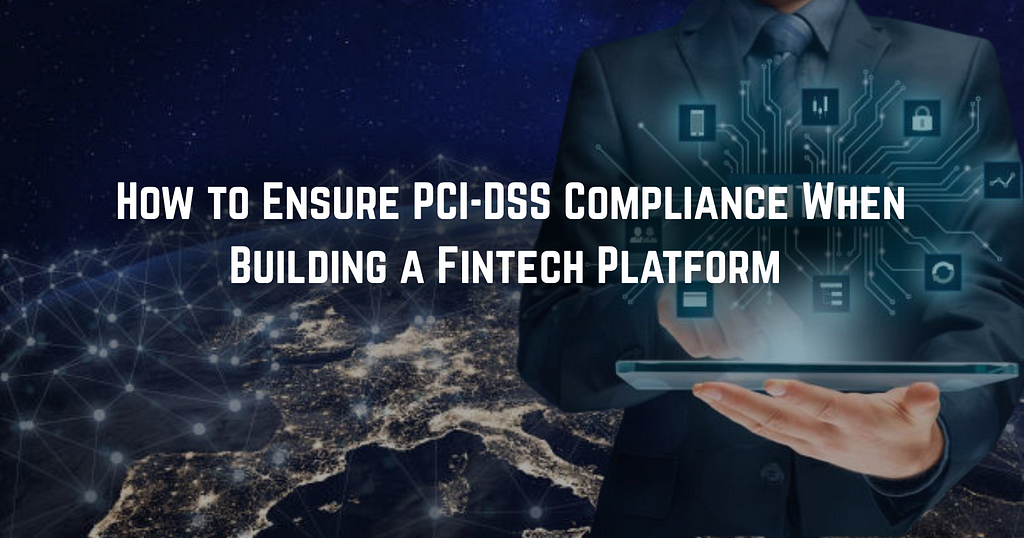This content originally appeared on Level Up Coding - Medium and was authored by Ethan Hunt

The rapid evolution of fintech has brought convenience and innovation to financial services, but it also demands heightened responsibility around data security. At the heart of secure financial operations lies PCI-DSS compliance, a standard that any fintech platform handling cardholder data must meet. It’s not just about regulation — it’s about trust, system integrity, and long-term growth.
This blog offers a comprehensive guide to integrating PCI-DSS compliance throughout the development of your fintech platform — from initial architecture to continuous monitoring.
Understanding PCI-DSS in the Fintech Context
The Payment Card Industry Data Security Standard (PCI-DSS) is an internationally recognized set of security requirements established to protect cardholder information during payment transactions. It defines protocols to secure credit card transactions and protect stored payment information.
In fintech, compliance is essential because these platforms routinely manage transactions, store customer credentials, and interact with financial institutions. Failure to meet PCI-DSS standards can result in penalties, service disruptions, and damage to customer confidence.
Key Goals Behind PCI-DSS
Rather than seeing PCI-DSS as a checklist, it’s more accurate to view it as a security-first mindset. It revolves around six core objectives:
Establish and maintain a secure network infrastructure
Apply consistent vulnerability management processes
Implement strict access restrictions and identity controls
Continuously monitor, test, and log system activity
Adopt and enforce an internal security policy across the organization
Steps to Build PCI-DSS Compliance into Your Fintech Platform
For any team involved in Fintech app development, aligning with PCI-DSS standards from day one is crucial to ensuring data security and regulatory compliance.
1. Design for Security from the Start
Secure architecture should be prioritized at the early stages of system planning. Segment the network to isolate sensitive systems and avoid overlapping access points. Choose infrastructure providers that offer PCI-ready services but understand that security configurations are your responsibility.
Use secure-by-default principles when selecting hosting solutions, databases, and APIs.
2. Avoid Storing Sensitive Data When Possible
One of the most effective ways to reduce PCI scope is to avoid storing cardholder data entirely. Use tokenization and payment gateway integrations that handle card processing externally. If storing or transmitting data is necessary, apply strong encryption methods to safeguard it both during transfer and while it’s stored.
Data minimization isn’t just safer — it also reduces audit complexity.
3. Implement Access Restrictions and Identity Controls
Define access roles clearly. Only authorized personnel should be able to interact with environments that process or store payment data. Enforce role-based access control (RBAC) and require multi-factor authentication (MFA) for admin-level access.
Logging and auditing mechanisms must be in place to track any system interactions related to sensitive data.
4. Secure the Development Lifecycle
Security must extend beyond infrastructure into the application development process. Integrate security checkpoints throughout the Software Development Lifecycle (SDLC) by:
Performing regular threat modeling
Running automated security scans
Validating third-party components for vulnerabilities
Educating developers on secure coding standards
Your codebase should be resilient to common attack patterns like SQL injection, cross-site scripting, and insecure deserialization.
5. Establish Logging and Monitoring Mechanisms
Monitoring isn’t just for detecting breaches — it’s a requirement for PCI-DSS compliance. Log all access attempts to cardholder systems and retain logs for at least 12 months. Use real-time alerting systems to flag unusual behavior or unauthorized access.
Regularly review logs and conduct internal audits to identify blind spots.
6. Build a Response Plan for Security Incidents
No system is immune to threats. A well-defined incident response plan is essential. This should include:
Incident detection and classification protocols
Internal communication workflows
Escalation steps for different types of breaches
Notification procedures for regulatory bodies and affected users
Test this plan regularly to ensure all stakeholders know their roles.
7. Schedule Regular Compliance Reviews
Compliance is not a one-time activity. It’s an ongoing process that requires regular assessment and documentation. Depending on your business model and data handling practices, you may:
Complete annual self-assessment questionnaires (SAQs)
Undergo external audits by Qualified Security Assessors (QSAs)
Conduct vulnerability scans every quarter and carry out penetration testing on an annual basis to identify and address potential security risks
Keep records of all policies, procedures, and system changes that impact your PCI-DSS posture.
Reducing Your PCI-DSS Burden with Third-Party Partners
Partnering with PCI-certified service providers can dramatically reduce your compliance obligations. Consider outsourcing payment processing, encryption, and secure storage to providers with a proven track record in compliance.
This doesn’t remove your accountability, but it limits the scope of your systems under audit.
Final Thoughts
Ensuring PCI-DSS compliance is essential for fintech platforms looking to grow responsibly and sustainably. When integrated early in the development cycle, compliance becomes a strength rather than a burden. It safeguards your business, builds customer trust, and opens doors to global financial partnerships.
For fintech innovators, prioritizing data protection isn’t just the law — it’s a competitive advantage.
Fintech How to Ensure PCI-DSS Compliance When Building a Fintech Platform was originally published in Level Up Coding on Medium, where people are continuing the conversation by highlighting and responding to this story.
This content originally appeared on Level Up Coding - Medium and was authored by Ethan Hunt
Ethan Hunt | Sciencx (2025-04-24T16:16:57+00:00) Fintech How to Ensure PCI-DSS Compliance When Building a Fintech Platform. Retrieved from https://www.scien.cx/2025/04/24/fintech-how-to-ensure-pci-dss-compliance-when-building-a-fintech-platform/
Please log in to upload a file.
There are no updates yet.
Click the Upload button above to add an update.
